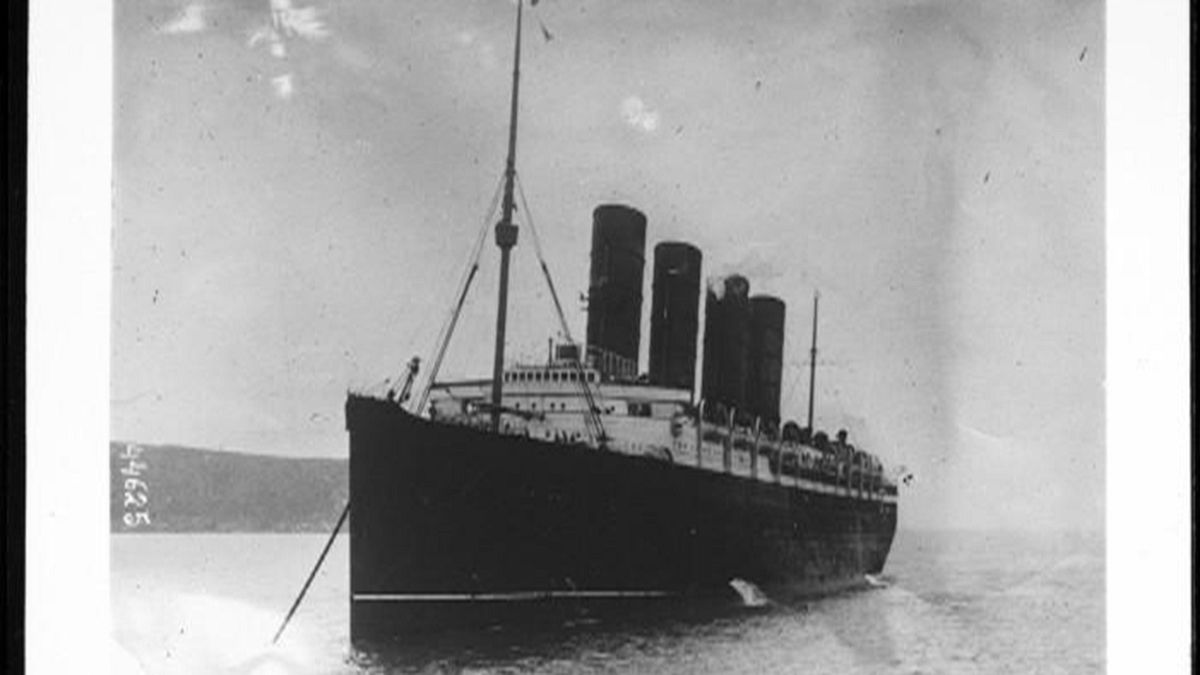1915: May 7
At the end of April 1915 in the United States, the British ocean liner Lusitania was being loaded with food, machinery and – secretly – munitions destined for Britain. Those on board had been warned that they would be sailing in a war zone, an area patrolled by German submarines working under an ‘unrestricted’ warfare campaign, but many of them saw it as an idle threat. It departed on May 1 for Liverpool, England.
With the Lusitania just hours from its destination on May 7, U-boat-20, a German submarine patrolling the northern tip of Britain, fired a single torpedo which hit the liner’s starboard side. Passengers on board first felt an explosion as the torpedo hit the ship and then there was a second blast from somewhere in the engine room. All power was cut off and the ship began to tilt. The tilt of the ship meant many of the lifeboats on the port side could not be launched, 1,198 people died in sinking, 761 people were rescued by boats.
It is reported that the captain ignored advice to keep speed high and to zigzag in an attempt to confuse the U-boats plotting the course of the ship. Nevertheless the sinking of the Lusitania caused outrage around the world, especially in the US which lost 128 citizens in the disaster and had repeatedly protested Germany’s unrestricted submarine warfare. The Germans defended their decision by saying that the ship was armed and that it had been carrying munitions. The first of these claims was false but the second was later proven to be true in released secret documents, although the British denied it at the time.
In Germany the fear of drawing the Americans into the war led Kaiser Wilhelm to issue an apology and restrict the policy of unrestricted U-boat warfare. It was an unpopular decision with the German military leaders who wanted an aggressive naval policy and the decision to resume the strategy was made in early 1917.


